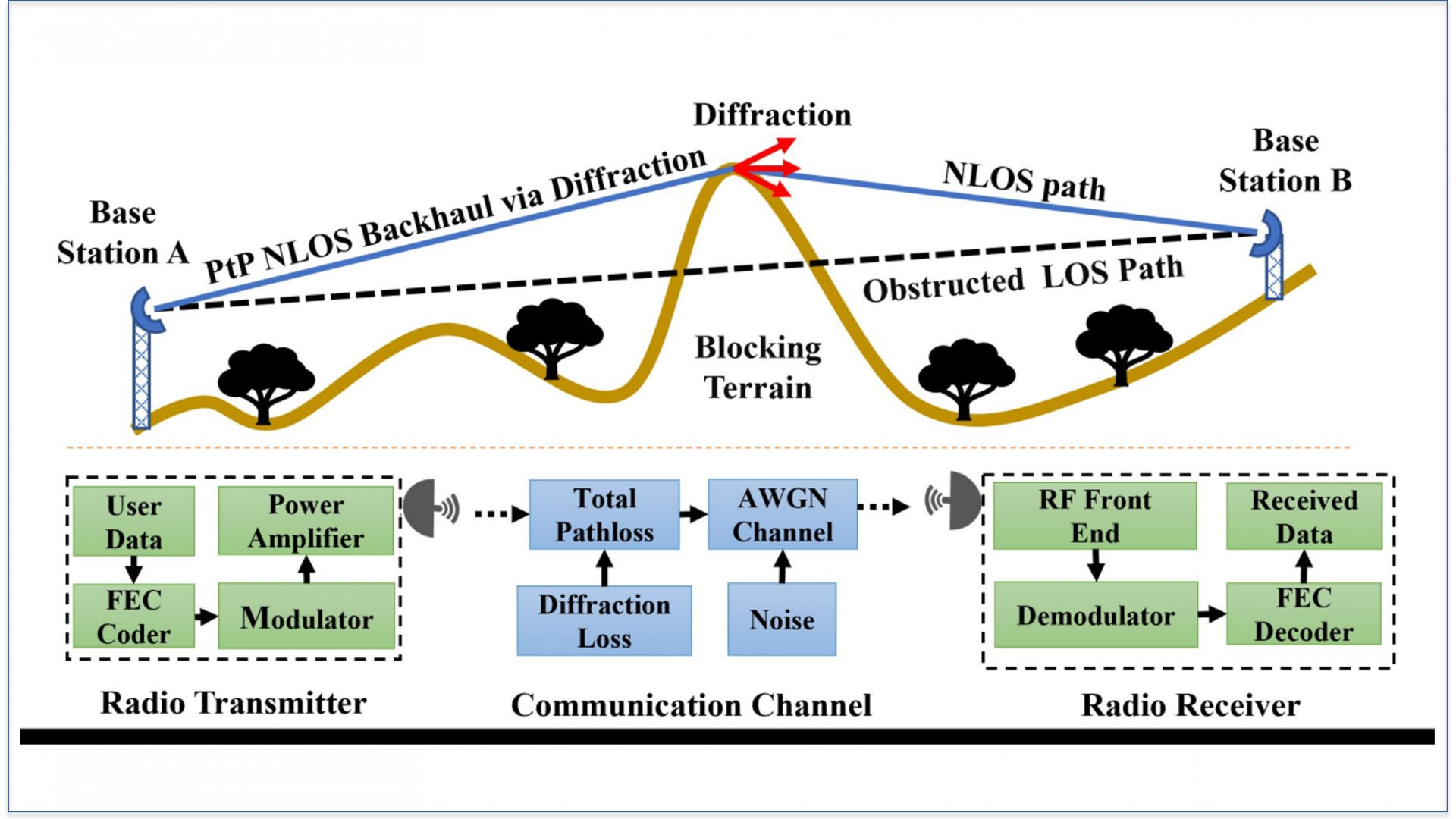In an effort to address the challenges associated with providing broadband Internet connectivity in rural and hard-to-reach areas, a team of researchers from the Communication Theory Lab (CTL) at KAUST, including Muneer M. Al-Zubi and Mohamed-Slim Alouini, carried out a research study on modelling and examining the feasibility of non-line-of-sight (NLOS) sub-6 GHz backhaul via diffraction for providing internet connectivity in rural areas using both theoretical and experimental data. This work has recently been published in the IEEE Open Journal of Communications Society.
Many rural areas worldwide still lack Internet access due to high costs, lack of infrastructure, and lower income. Traditional Point-to-Point (PtP) wireless links require a clear line-of-sight (LOS) path which can be challenging in such areas. Using repeaters or passive reflectors to overcome blocked LOS paths can significantly increase deployment costs. An alternative solution is NLOS wireless backhaul via diffraction, which offers a low-cost option. However, it requires accurate propagation modelling and performance evaluation before deployment to ensure reliability and cost-effectiveness.
The research paper delves into the accuracy of various terrain-based propagation models for predicting diffraction in rural areas operating at the unlicensed 5.8 GHz band. It also evaluates the feasibility of an end-to-end NLOS backhaul link based on the IEEE 802.11ac (Wi-Fi 5) standard. The study aims to understand the performance of the NLOS backhaul link in terms of achieved throughput and packet error rate across various parameters, including antenna heights, modulation and coding scheme (MCS), and channel bandwidths. A notable finding of the research is that the irregular terrain model (ITM), a widely used model in RF design software, significantly overestimates diffraction loss over small diffraction angles compared to the measured path loss. In contrast, a less complex rounded-obstacle diffraction model demonstrated high prediction accuracy. The results also demonstrate the feasibility of NLOS backhaul over a distance of 11 km, indicating potential cost-effective solutions for bridging the digital divide in underserved regions, particularly when many backhaul links are needed.
This work can help in the optimum planning and design of NLOS wireless backhauls via diffraction before deployment while saving time and cost. Moreover, it may give better insight into the understanding of RF propagation and system performance in such propagation links which can help improve the available RF propagation tools and models.
More information available in the paper:
M. M. AL-ZuBi and M. -S. Alouini, "End-to-End Modelling and Simulation of NLOS Sub-6 GHz Backhaul via Diffraction for Internet Connectivity of Rural Areas," in IEEE Open Journal of the Communications Society, doi: 10.1109/OJCOMS.2023.3330078.


